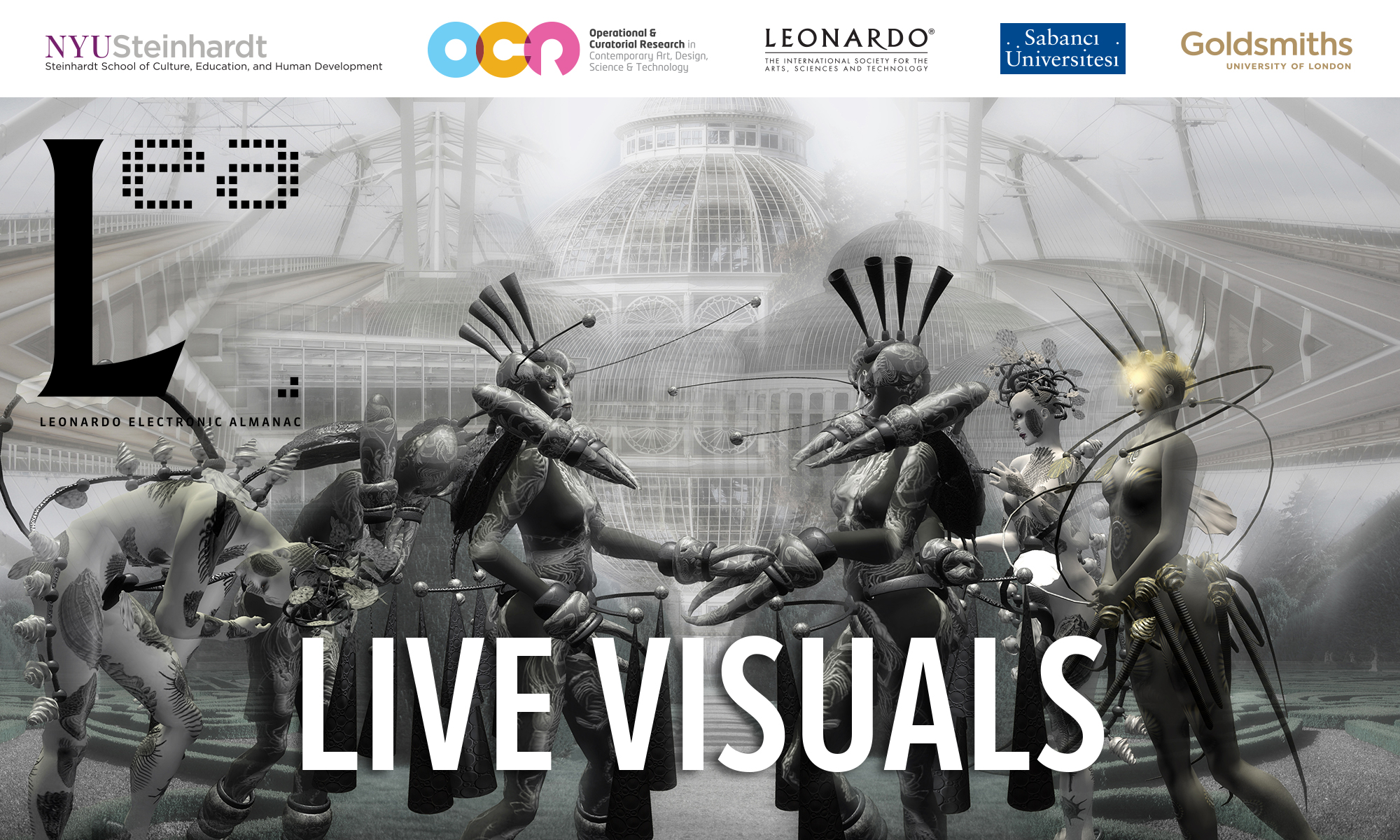
Live Visuals, Leonardo Electronic Almanac, Volume 19 Issue 3
ISBN: 978-1-906897-22-2
ISSN: 1071-4391
Volume Editors: Lanfranco Aceti, Steve Gibson and Stefan Müller Arisona
Editor: Ozden Sahin
Choreotopology: Complex Space In Choreography With Real-Time Video
by Kate Sicchio
Within this paper a new conceptual framework for considering space within choreography with real-time video projection is considered. Choreotopology encompasses the identification of four specific spaces and the relationship of these spaces. By drawing on the practice of choreography with real-time video and examining the transformation of movement across physical space, camera space, projection space and compositional space a complex, a topological space for movement occurs. Choreotopology is further defined by exploring frames for movement, interrelated and connected space, time in the form of continuity and spatio-temporal aspects. This framework is applied to a discussion of the author’s own choreographic practice with real-time video projection.
This paper explores space within choreography with real-time video projection and how the emerging concept of choreotopology maybe used to consider the composition of stage and digital video technology. Topology has previously been utilised to discuss cultural practices, including choreography with various
approaches. When applying topological ideas to choreographic works that use real-time video technology, choreotopology emerges as a conceptual framework. This approach to using topology in choreography with real-time video marks an attempt to create a dynamic structure to present live and mediated movement
together, rather than choreograph two separate elements of performance that may be in tension with each other.
Choreotopology contains spaces for movement, considering the interrelationships and connectivity found within these spaces. It also considers the spatiotemporal and continuity found within these spaces. Finally it considers the transformation of movement through the space, including physical space, camera space, projection space and compositional space. The discussion of a practical choreographic study created by the author is utilised to illustrate this concept further.
Full article is available for download as a pdf here.
Volume 19 Issue 3 of Leonardo Electronic Almanac (LEA) is published online as a free PDF but will also be rolled out as Amazon Print on Demand and will be available on iTunes, iPad, Kindle and other e-publishing outlets.
